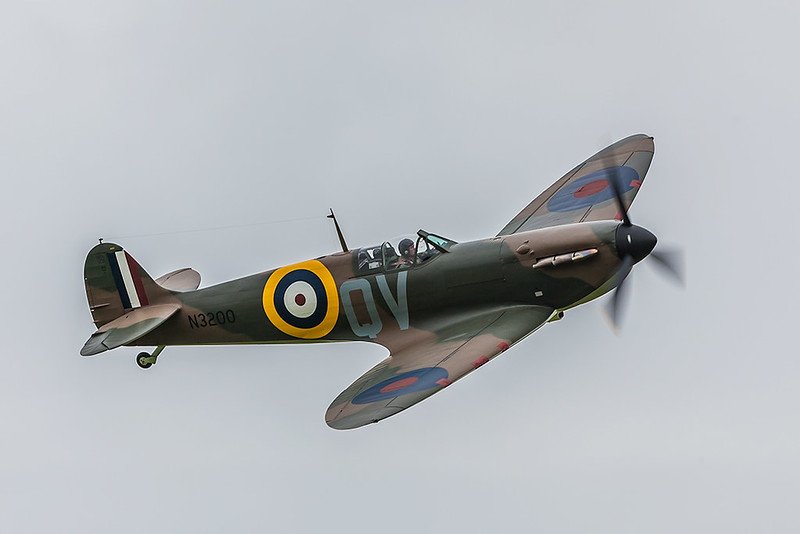Spitfire N3200 – Raised from the Sands of Sangatte
Air Commodore Geoffrey Dalton Stephenson, CBE (19 January 1910 – 8 November 1954), was a distinguished Royal Air Force officer whose story is intertwined with that of his Spitfire, N3200 QV. Lost in battle during the Dunkirk evacuation, the aircraft lay buried for decades before being rediscovered and restored to flight, serving as a lasting tribute to Stephenson’s remarkable career.
The Downing of Spitfire N3200
On 26 May 1940, as British forces evacuated from Dunkirk, Stephenson led his squadron in aerial combat over the beaches. Flying Spitfire Ia N3200, coded ‘QV,’ he was shot down by German pilot Erich Rudorffer, who claimed his fifth aerial victory that day. Rudorffer would go on to achieve 222 aerial victories and survive the war, passing away in 2016 at the age of 98.
Stephenson crash-landed his aircraft on the sands near Sangatte, southwest of Dunkirk. Though uninjured, he remained at large for ten days before surrendering to German forces. He was subsequently held in multiple POW camps before being transferred to Colditz Castle, where he contributed to the design of the Colditz Cock glider, though it was never flown.
A Distinguished RAF Career
Before the war, Stephenson had been a member of the RAF aerobatic team and later commanded 19 Squadron at RAF Duxford. Following his release after the war, he became the personal pilot to King George VI and Queen Elizabeth II. Over his 20-year RAF career, he logged thousands of flight hours in both piston and jet-powered fighters, flying aircraft such as the Meteor, Venom, Hunter, Swift, and the USAF F-86.
Recognized as one of the RAF’s most skilled fighter pilots, Stephenson was close friends with RAF ace Douglas Bader, who served as best man at his wedding to Anne Jean Maureen Booth, daughter of Sir Paul and Lady Booth. Together, they had three children: Anna, Victoria, and Veryan.
The Rediscovery and Restoration of N3200
For decades, Spitfire N3200 remained buried beneath the sands where it had crash-landed. In 1986, the aircraft was rediscovered and salvaged, marking the beginning of an extensive restoration effort. In 2014, the Aircraft Restoration Company at the Imperial War Museum in Duxford completed the painstaking process of returning N3200 to flight. The aircraft was restored with the same markings it bore on the day it was downed, preserving its historical significance.
Today, N3200 is a featured exhibit at the Imperial War Museum, serving as a tangible link to Stephenson’s legacy and the sacrifices made during the Battle of Dunkirk.
Fatal Crash
In 1954, Stephenson led a six-man RAF team from the Central Fighter Establishment, based at RAF West Raynham, on an exchange tour at Eglin Air Force Base, Florida.
On 8 November, while flying a USAF F-100A-10-NA Super Sabre (53-1534) near Auxiliary Field 2 at Eglin, he attempted to join formation with another F-100 piloted by Capt. Lonnie R. Moore, a Korean War jet ace. His aircraft suddenly entered a steep spiral and crashed into a pine forest near Pierce Field at approximately 14:14, killing him instantly.
Investigations revealed multiple design and equipment failures in the F-100A, prompting the USAF to temporarily ground the aircraft until the issues were resolved.
Legacy
Though Stephenson’s life was tragically cut short, his story lives on through Spitfire N3200. The aircraft’s restoration and continued presence at Duxford ensure that his contributions to the RAF and his role in the Battle of Dunkirk are remembered.
See Spitfire N3200 at IWM Duxford.

